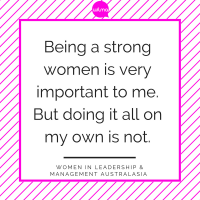The World Assembly for Women, convened by Prime Minister Shinzo Abe of Japan in the latter half of this year, provides lessons for Australia on the barriers for women in the workplace and how to overcome them.
As the nominated participant from Australia’s Male Champions of Change (MCC), I witnessed a groundswell of international commitment to increasing female participation in flexible workplaces as a key means of boosting GDP growth in developed countries. The commitment included a mandate to empowering women leaders.
The Male Champions of Change is a group of Australian business and government leaders, convened by the Australian Sex Discrimination Commissioner Elizabeth Broderick in 2011, to advance gender equality in Australia. It has been prosecuting the relationship between boosting female participation in the workforce and its ability to lever economic growth.
In Japan, Prime Minister Abe saw the World Assembly for Women as a platform for advancing in Japan and elsewhere, the concept of “Womenomics”, the structural economic reforms required to access Japan’s most under-utilised resource: its women.
In an era of flat economic growth in many developed countries, GDP growth can be boosted by increasing the participation of women in flexible workforce activities, a concept separate from casualisation of the workforce. Developed countries have highly educated female resources that are under-utilised.
Japan in particular is at an economic crossroads, with 25 per cent of its population over 65, a declining birthrate and a falling workforce participation rate. The Economist has reported that in Japan, 70 per cent of women stop work for a decade after the birth of their first child, compared with 30 per cent in the US.
In Australia, our experience is that ‘‘off-ramping’’ for this period makes it unlikely that a woman will return to a senior full-time position in future.
During the conference, international business leaders considered why in Japan and elsewhere women left the workforce and had failed to achieve leadership roles.
It became clear that US has done most to empower women in leadership. Japan, along with Australia and others, has significant constraints and barriers that could be addressed by:
- A commitment by senior corporate and government leadership to the empowerment of women leaders.
- Companies setting achievable diversity targets over a reasonable time frame.
- Changing the middle management mindset and attitude to diversity.
- Consideration of “work-life management” over “work-life-balance”, where women can choose how to blend work and life together.
- Enhancement of care-giving solutions for working women.
- Constraints on the supply of home-based care and childcare should be removed and flexibility regarding policies and measures to invite foreign care-givers should be increased.
- Reviewing tax and social security systems that inhibit the re-entry of women to the workforce — including income tax deductions in order to support child caring and tax incentives for companies that encourage men to take parental leave.
At the WAW conference, Anne Sweeney, the co-chairman of Disney Media Networks and president of Disney ABC, argued that to treat workplace flexibility as “a woman’s issue” was a mistake.
The management of household and child caring needs in a family usually requires the collaboration of both partners. The 20th century model of one partner (invariably the women) sacrificing their career for that of the other is no longer fit for purpose in this century. By sharing tasks, both partners may aspire to rewarding careers. Prime Minister Abe is committed to creating a society in which women do not face structural barriers in their professional lives.
In Australia, the corporate sector has done reasonably well in relation to the number of women appointed to ASX Boards, while recognising more remains to be done. The ASX has been a world leader in promoting transparency, by requiring “if not, why not” disclosure of diversity targets, diversity participation rates and diversity programs and the proportion of women in leadership roles.
Meanwhile, the MCC has promoted the empowerment of women by providing data-based guidelines on what programs work and which do not. Notably the Australian public sector is well ahead of the private sector in the number of women in senior ranks.
It is important to promote gender diversity and female leadership . We cannot allow the momentum and change achieved to date to falter.
This article was originally published on The Australian 13th December. Read the original article here.









Leave A Comment